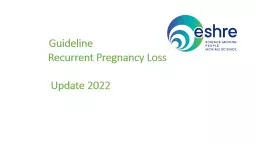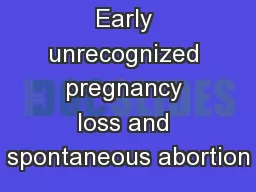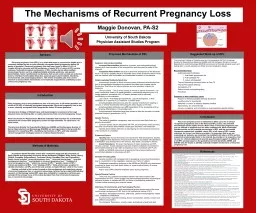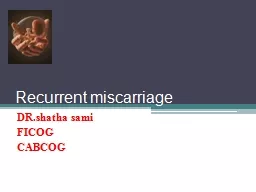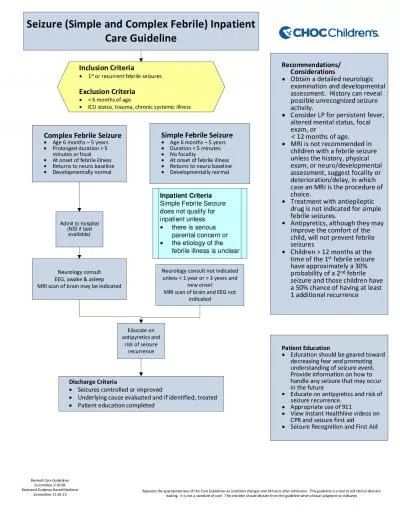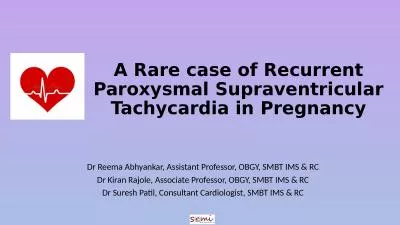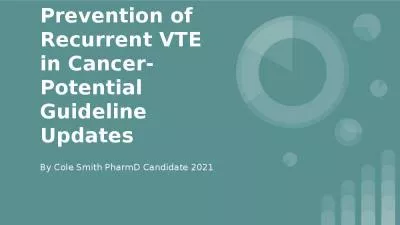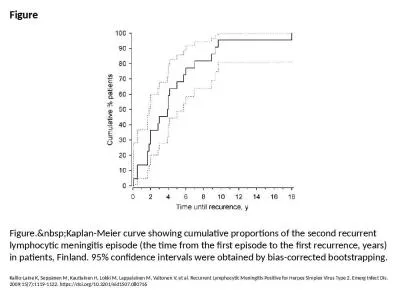PPT-Guideline Recurrent Pregnancy Loss
Author : PeacefulPlace | Published Date : 2022-08-02
Update 2022 DEFINITION Pregnancy loss miscarriage Spontaneous demise of a pregnancy before the fetus reaches viabilityuntil 24 GA Recurrent pregnancy loss
Presentation Embed Code
Download Presentation
Download Presentation The PPT/PDF document "Guideline Recurrent Pregnancy Loss" is the property of its rightful owner. Permission is granted to download and print the materials on this website for personal, non-commercial use only, and to display it on your personal computer provided you do not modify the materials and that you retain all copyright notices contained in the materials. By downloading content from our website, you accept the terms of this agreement.
Guideline Recurrent Pregnancy Loss: Transcript
Download Rules Of Document
"Guideline Recurrent Pregnancy Loss"The content belongs to its owner. You may download and print it for personal use, without modification, and keep all copyright notices. By downloading, you agree to these terms.
Related Documents

